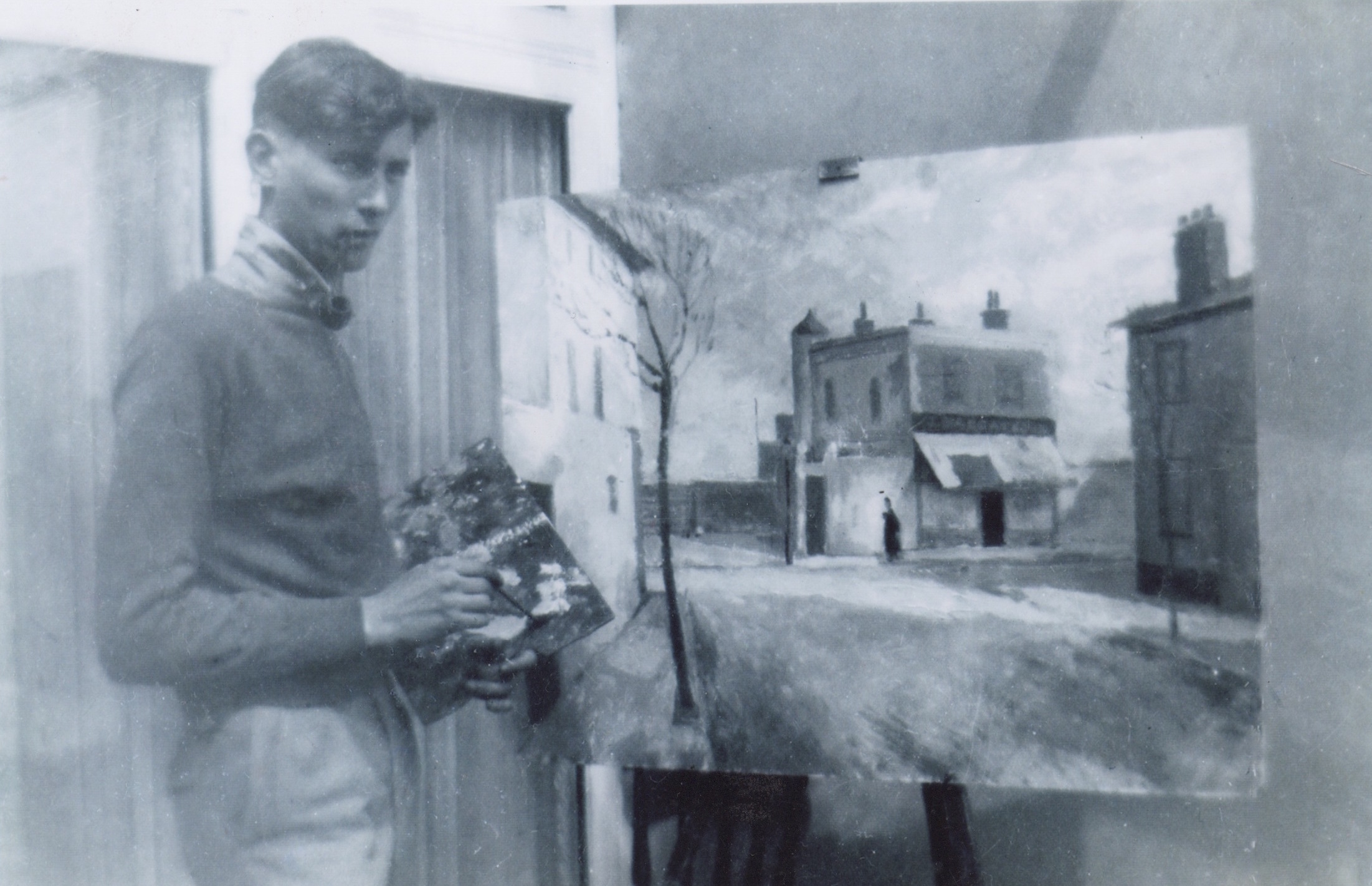History
“I look to the strong English tradition of absorption in landscape and organic forms, the search to find a poetic metaphor for landscape, sea and weather, to try and translate the ephemeral into the permanence of terracotta and glaze. ”
The Early years 1919-1948
Tower was born on the Isle of Sheppey in Kent, a landscape of tidal estuaries which provided a rich imagery of reeds, flat fish, shells and patterns of water on sand. Aged 17, he travelled to and worked in Australia, returning via New Caledonia. In 1938, he went to Royal Academy Schools to study his first love, painting, winning the Gold Metal in 1939.
A childhood accident blinded Tower in one eye and he spent the war working in camouflage, and in mapping at the Polish Ministry of Information. He married fellow student, Maureen McManus in 1944. He enrolled at the Slade in 1945 and in 1948 trained as a teacher at the London Institute of Education, which included ceramics courses taught by William Newland and Dora Billington.
Corsham 1949 to 1957
In 1949 Clifford Ellis invited Tower to teach ceramics at the Bath Academy of Art, which had recently been established at Corsham Court to train artists as teachers. Tower set up a pottery in the old stables of Beechfield House.
Drawing on the English traditions of earthenware decorated with slip or with tin-glaze, Tower began with simplified figurative designs inspired by animal and plant forms. Over the next five years these became increasingly geometric and abstract. From the mid ‘50s he moved from coiling and throwing, to press moulding into plaster forms, with a developing emphasis on vertical shapes.
Gimpel Fils, the London fine art gallery held its first solo exhibitions of Tower’s work in 1951. He continued to show with them throughout his life.
Corsham & Brighton 1958 to 1975
In 1958 Tower began to move from the tin-glazed work towards developing more sculptural forms that had the potential to be cast in bronze. Made of fired earthenware and finished with white slip, the Convex forms had grooved surfaces. The next group of work, Divided forms; were made with unglazed white china clay.
In 1964, the forms became more closely related to landscape, with titles like 'Tree', 'Copse' and 'Avenue'.
Tower moved to Sussex in 1966, where he was to remain for the rest of his life. In the early 70’s he experimented with fibreglass and resin, and wall-mounted reliefs.
Tower in Sculpture Studio, Brighton Polytechnic with Sculpture I, made of plaster and fibreglass in 1971 from a terracotta maquette of 1965
Sussex 1976-1983
Tower had spent roughly three separate decades on painting, ceramics and sculpture. In 1976, with renewed vigour, he fused the three disciplines to create flattened vase forms and low horizontal chargers, shallow bowls and fish shapes. The two faces of the vertical vessels frequently showed an astonishing congruity.
Sussex 1984-1988
In 1983 Tower travelled to Turkey and the city of Bursa, which may well have inspired the ‘Boursa’ series. Tower retired from teaching in 1986, but continued working until his death of heart failure in 1988.



